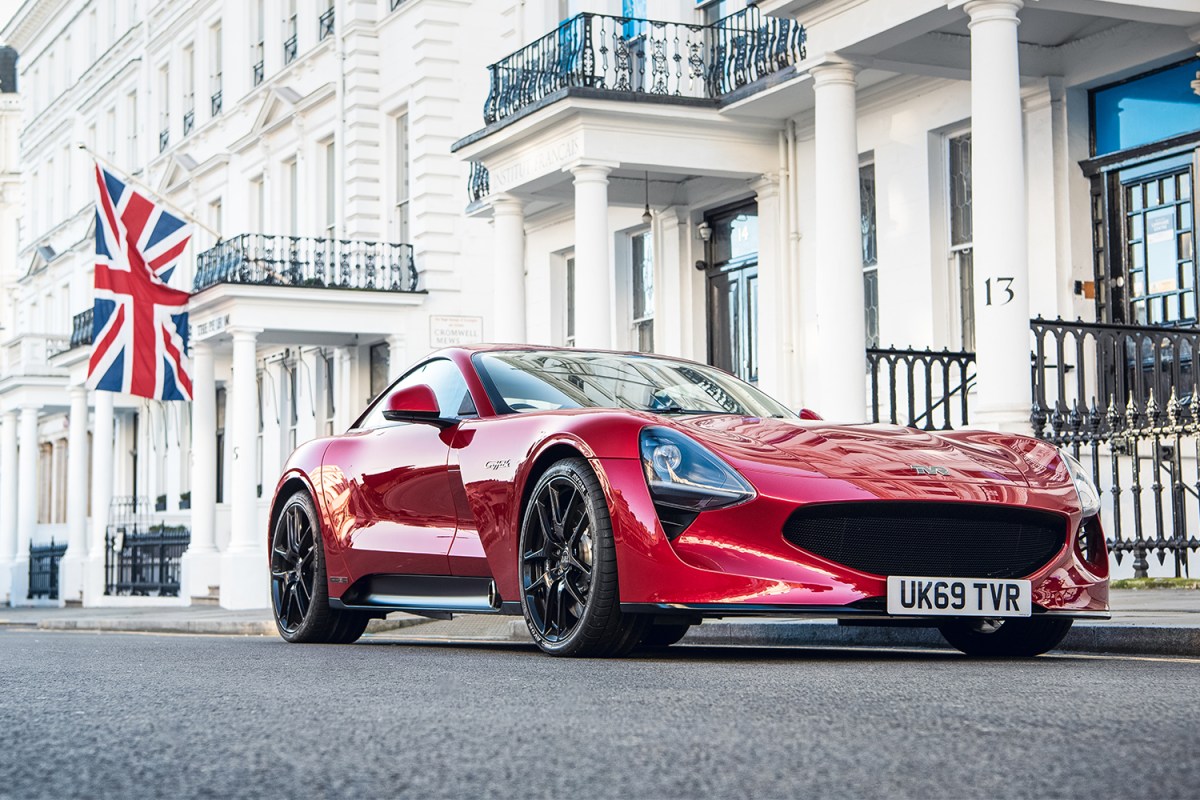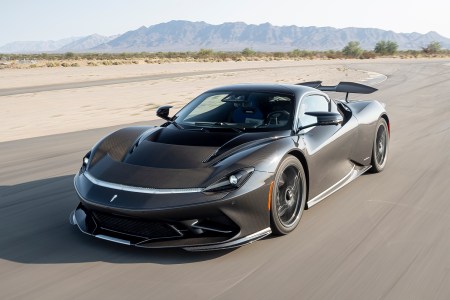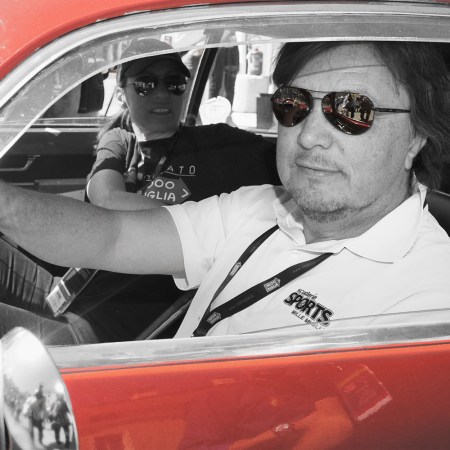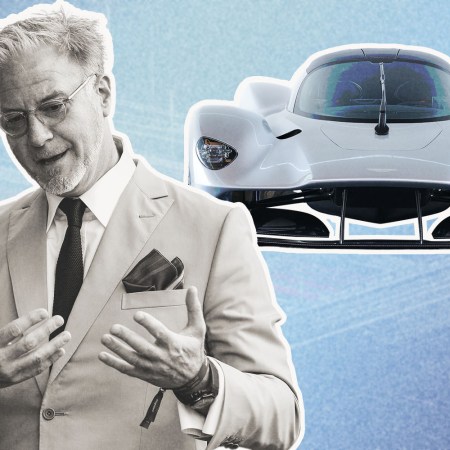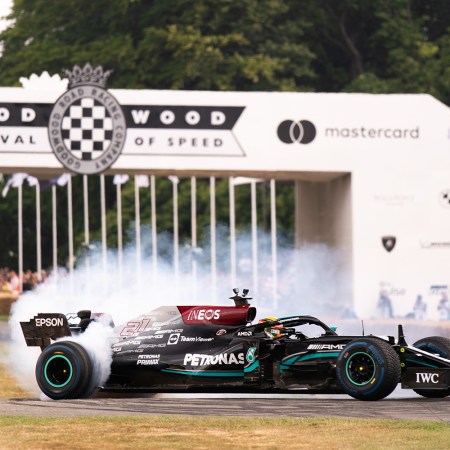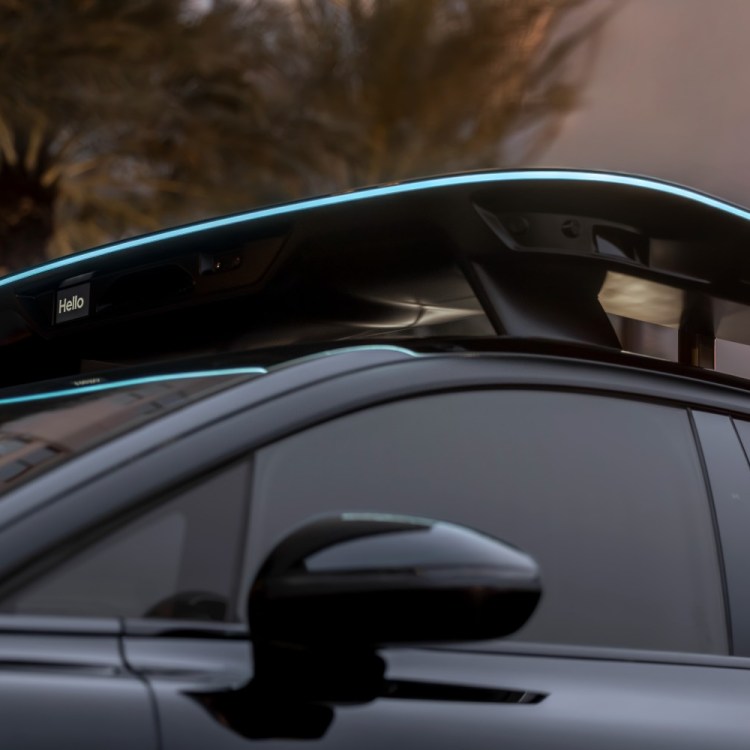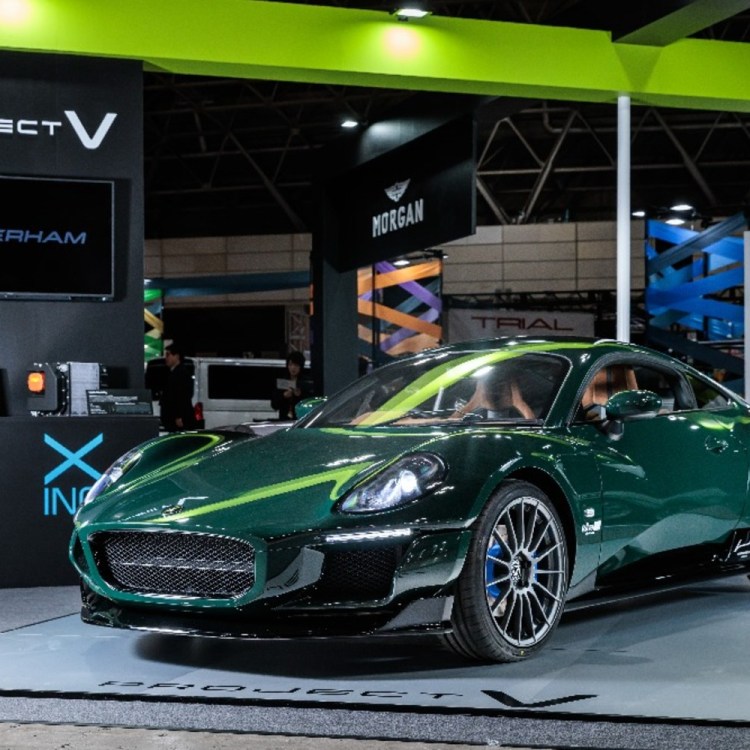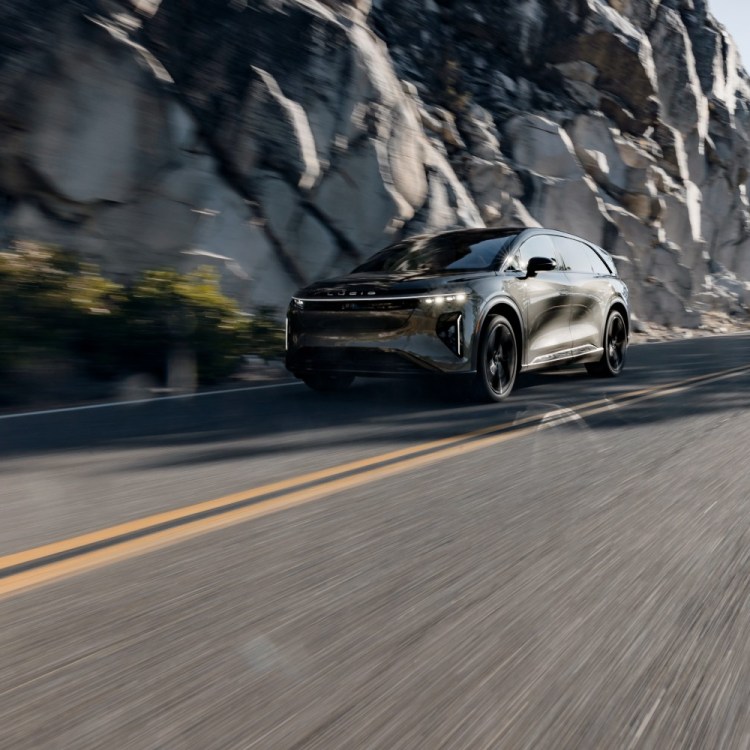Les Edgar fell in love with Aston Martin in an unusual way.
“What got me into cars was working for the [U.K.] Ministry of Defence on specialist head-up displays for fighters and submarines, and [from that] came a job of fitting a small cathode ray tube to a car that would become the Lagonda,” recalls Edgar, a British tech entrepreneur. “And later I just started collecting them, usually modifying them to make them a bit louder, a bit more hairy.”
Soon Edgar would dive much deeper. Aston Martin had been acquired by Ford in the late ‘90s, then Ford bought Jaguar and both were racing at Le Mans, and since it was inefficient to have two marques competing with each other, Ford dropped Aston Martin.
“That just seemed crazy to me — Aston should be racing,” he enthuses. So he negotiated for the global license for endurance racing with Aston Martin, funding it personally. “Eventually it occurred to me that I was spending quite a lot of money on someone else’s brand and thought it would be great if I could at least do this with ‘my’ car.”
Enter, as Edgar puts it, “the Russian guy.” That would be entrepreneur Nicolai Smolenski, who at the time owned a company by the name of TVR, but who’d lost interest and mothballed it. Edgar approached him and soon found himself buying a sports car company, with a view to getting back to racing. But first things first. Next year will see the opening of a new TVR factory in Ebbw Vale, Wales, returning production properly to the U.K. First off the line will be the COVID-stalled, Cosworth-engined V8 Griffith, and an electric version, too.
“100% TVR should be back here in the U.K. It’s part of its charm. And British luxury goods, which is what we’re really talking about here, do extremely well globally,” stresses Edgar. “But you’ve got to get it right.”
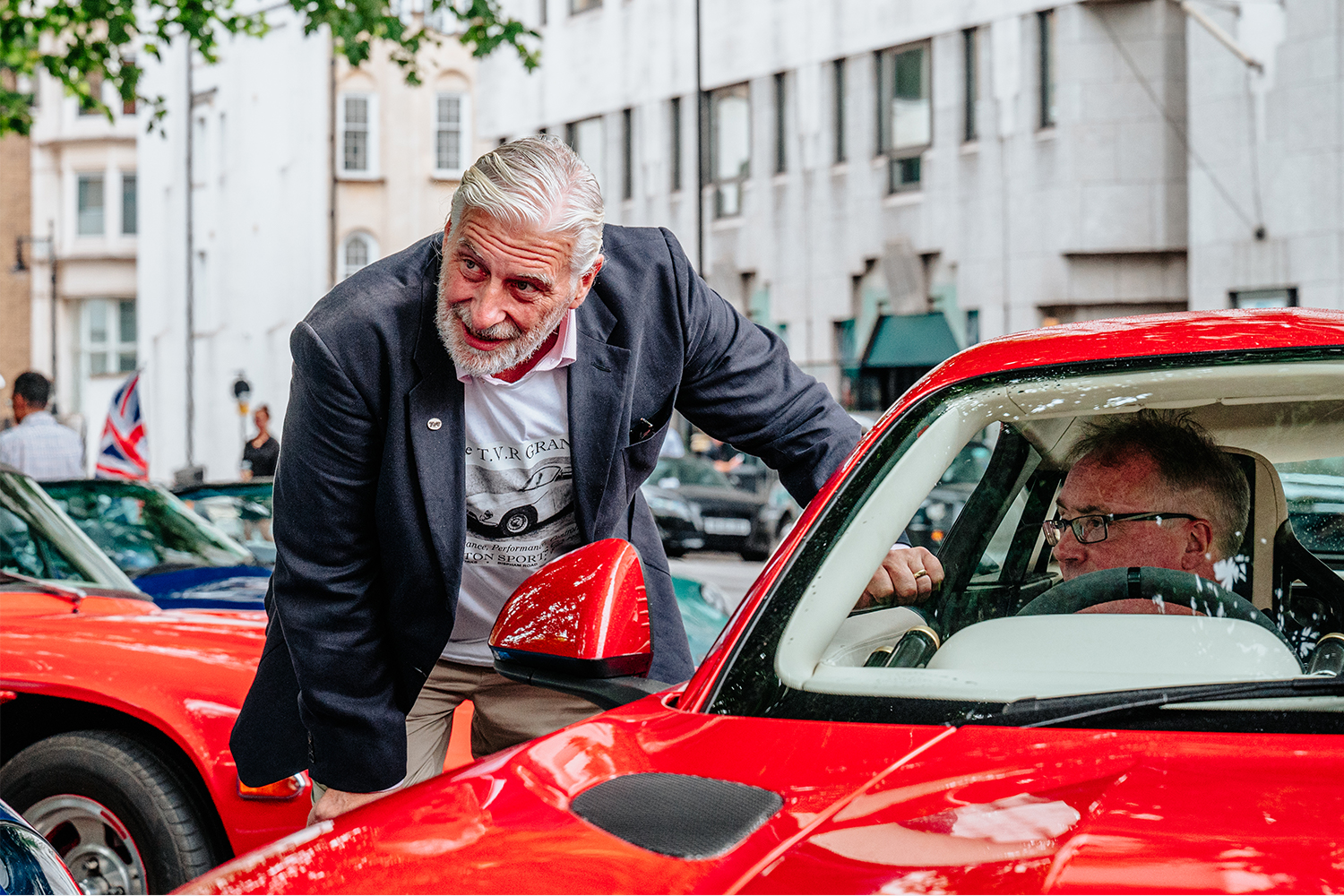
It’s at the factory that the prototypes for new TVR models will be produced over the coming months. Once production tooling is in place, crash testing can follow and full-on production can proceed. It will be a historic moment in sports cars, not just for British ones. This year marks TVR’s 75th anniversary; it was in 1947 that the company was founded by Trevor (TVR) Wilkinson in Blackpool, England, using his innovative concept of fitting a glass-reinforced plastic body to a multi-tubular chassis to create cars that weighed much the same as a small saloon of the period, but with some four times the power.
The business saw tumultuous times — with many a near bankruptcy and changes of ownership — but through the 1990s and early 2000s produced the likes of the Chimaera, Cerbera, Tuscan and Sagaris, most of each model, unusual for the car industry, built in-house. But in 2007 TVR went into receivership, with Smolenski smartly buying back the rights to the brand.
“It’s a bit glib, but I do think you have to be a bit bonkers to try to revive an old British sports car marque,” chuckles Edgar, who made his money in computer games, back in 1995 selling his Bullfrog Productions to Electronic Arts, one of the largest video game publishers. “It’s so easy to build what other people are already building. You need to build something unique and then you need to persuade people that it’s cool to have one, because nobody needs a sports car. They want one.”
To fans of TVR — and Edgar says he underestimated just how many and enthusiastic they are — that means cars that are fast, of course, but also “unapologetic British bruisers: bespoke, loud, outrageous and in a strange color. A TVR has a point of difference. It’s smaller, two seats, rear-wheel drive, front-engined, manual gearbox and that’s it. It’s not a GT.” As he contends, a two-plus-two is not a true sports car. The challenge is finding a market for that difference.
“Ask [car enthusiasts] about TVR and they say they love it. Ask them if they’d buy one and they’re aware they’re going out on a limb,” he explains. “When you drop your TVR keys on the bar are your mates going to say ‘My god, what have you done?!’? Nobody is going to say that if you drop keys to a Porsche. But there will be four other sets of Porsche keys on the bar too. Most people don’t dare to be different. And not everybody will like what we produce. But you only need a few.”
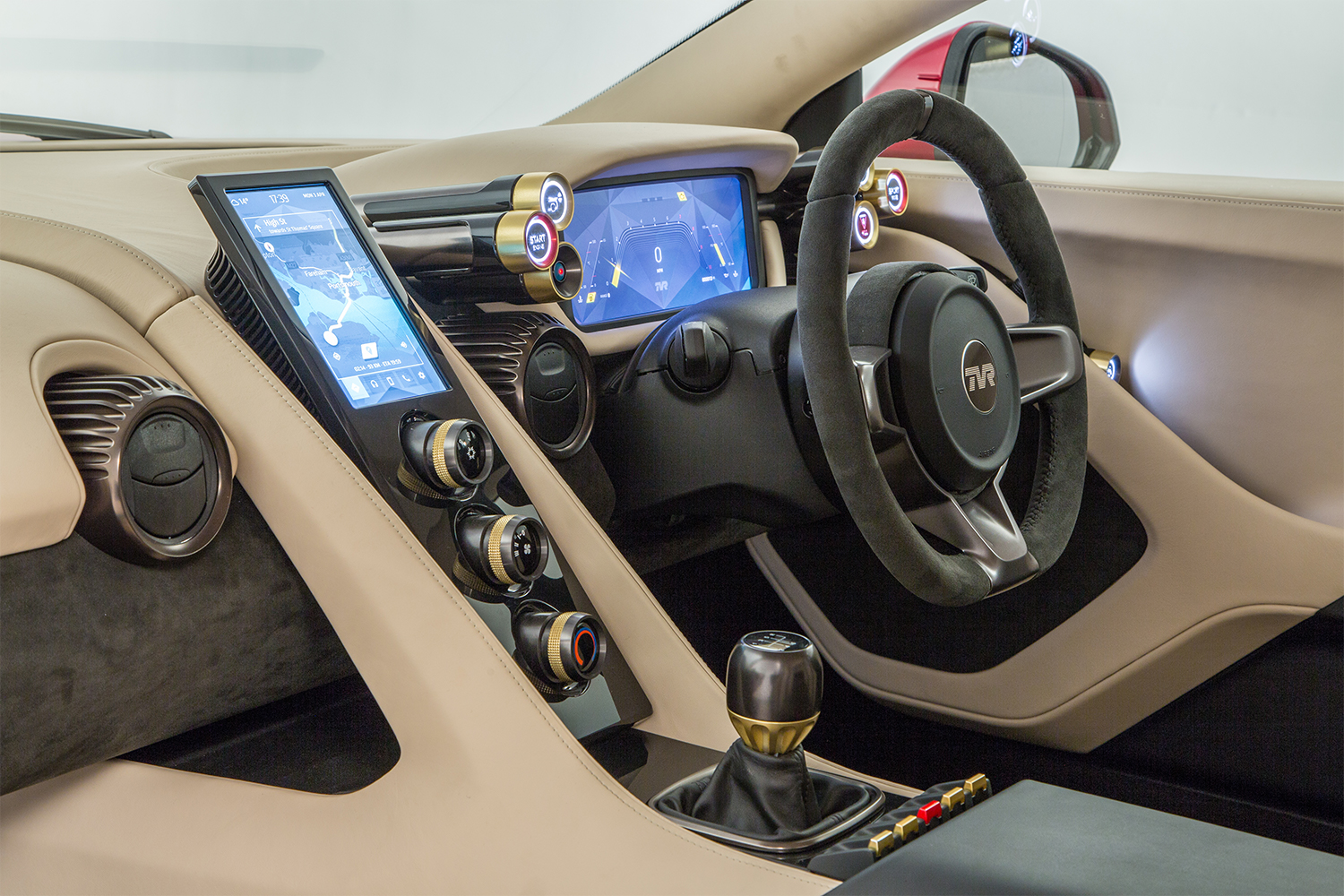
The snag is that developing and tooling such differences costs a lot of money, and to make that money back you have to sell a high volume of cars, “and there is no high volume of cars in the sports car sector,” says Edgar. That means tooling has to be used for a long time, which in turn means that a marque’s successive launches tend to not look dramatically different from the car before.
That’s where Gordon Murray comes in. While not well-known outside of the performance car world, in it he’s a design and engineering legend. It was Murray who designed the McLaren F1 road car. TVR signed him up for his magic touch with airflow. If other manufacturers seek to improve handling performance by adding more and more electronics, Murray is all about doing so through improved aerodynamics. “He’s the god of aerodynamics,” Edgar laughs.
But with Murray comes his proprietary iStream production system. Something like an evolution of Trevor Wilkinson’s method, the design includes a frame that supports the heavy parts of a car — the engine and the suspension — which is then encased with glued-in carbon fiber panels for strength and, finally, the body, which plays no structural role. That makes the resulting vehicle very light but also means that by just retooling the body TVR is freer to make short-run changes to its models, and keep things fresh in the process.
Behind the Electric Battista Hypercar Is a 92-Year-Old Classic Car Legend
A chat with the team at Automobili Pininfarina, whose $2 million EV brings together almost a century of history and a “start from scratch” attitudeThat kind of thinking is reflective of a change of attitude in British sports car manufacturing that has, over the last two decades, seen it “move on, and astonishingly so, in quality and in mentality,” Edgar reckons. Besides, any poor reputation that it had was actually shared across the sector; it wasn’t that long ago, he contends, that all sports car manufacturers, without exception, offered products with “idiosyncratic but slightly lovable faults that were meant to be endearing.”
“You could spend £250,000 on an Aston and it wouldn’t start,” says Edgar, “but you’d say ‘Well, that’s OK, it’s an Aston.’”
That won’t fly now. Today’s sports car customer is, he suggests, less of a petrolhead than previous generations, and so less tolerant of charming mechanical hiccups. These days, the customer is buying less into a culture, and more into an object that, he says, “has to be as good and as reliable as their VW. So we couldn’t drag with us the old TVR ways.”
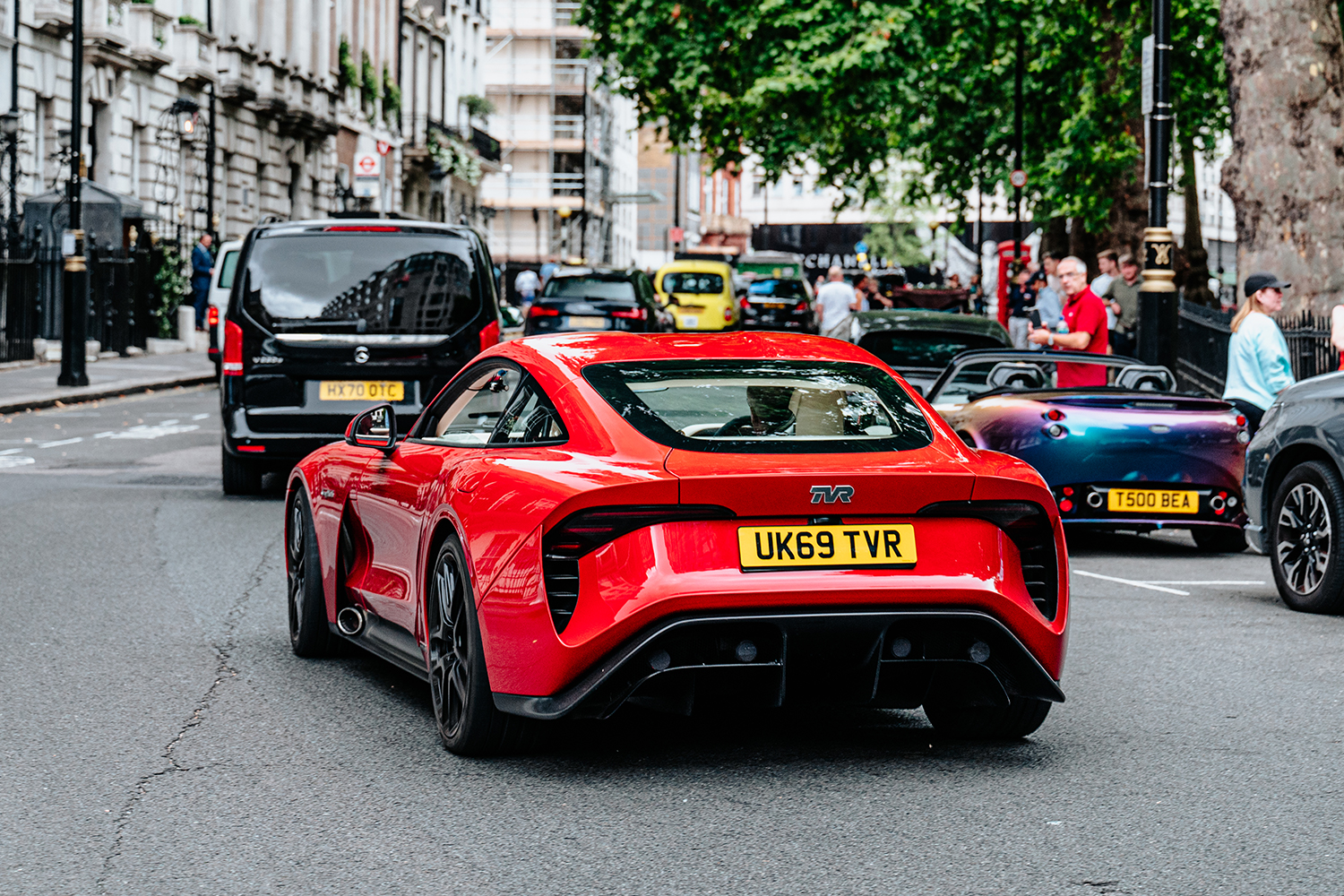
Does Edgar worry about leaving behind too much of those ways, like the guttural engine notes of older TVRs? The inevitable shift towards electric motors will surely denude the brand of some of its personality, won’t it?
“A year ago I would have said, ‘Oh my god, how can we possibly manage to go electric?’ Not when noise is such a big feature of a TVR. But we have no choice. We have to manage things so what comes out is still a TVR,” he says, hinting at ways the rejuvenated company is now working on giving their electric powertrains a sound that’s neither amplified nor artificial.
What’s more, he thinks the shift to electrification might actually play in TVR’s favor — and not just because Ensorcia, a lithium company, is an investor in the brand. For too long, he says, sports car manufacturers have competed in part on claims to have shaved another 10th of a second off their 0 to 60 mph statistic. With electrification, all performance cars — indeed, all cars — are going to accelerate very fast. That leveling, he argues, will turn the spotlight once again towards the driving experience. The lightweight nature of TVR cars means that, even with a heavy battery, they’ll retain an advantageous nippiness, and, since less weight requires less power, an environmental story to tell too.
“I think the focus will be in entertainment, in the sense of: are you driving the car or being driven by it?” Edgar says. “The trend has been away from drivers feeling the car, and for cars to do most of the driving, which can be a good attribute seeing as most of us are actually not very good drivers. But a sports car has to be involving. A TVR just has to be entertaining.”
This article appeared in an InsideHook newsletter. Sign up for free to get more on travel, wellness, style, drinking, and culture.
